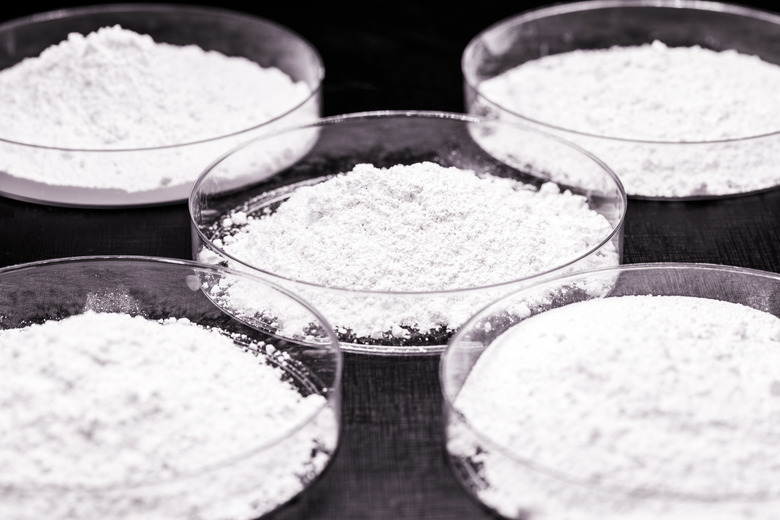How To Make Anhydrous Ammonium
Pure ammonia is sometimes referred to as anhydrous ammonia to distinguish it from aqueous solutions of ammonia. For example, household ammonia is actually a solution of at least 90 percent water and less than 10 percent ammonia (NH3). Ammonia has many applications and is one of the most commonly manufactured inorganic chemicals. Anhydrous ammonia is prepared commercially from natural gas, air and steam.
Step 1
Remove the sulfur from natural gas with hydrogen to produce hydrogen sulfide as a byproduct. Remove the hydrogen sulfide by passing this gas mixture through beds of zinc oxide. The zinc oxide will react with the hydrogen sulfide to form zinc sulfide and water. The remaining natural gas will be very high in methane.
Step 2
Heat the natural gas to about 1,500 degrees Fahrenheit. Add steam and a catalyst such as ferric oxide. This will cause the methane and steam to form carbon monoxide and hydrogen. In the presence of enough water, the carbon monoxide will recombine with the steam to form carbon dioxide and hydrogen.
Step 3
Remove the majority of the carbon dioxide and carbon monoxide gas. You can accomplish this with a variety of methods, such as absorbing it with various ethanolamine solutions. Remove the remaining traces of carbon monoxide and carbon dioxide with hydrogen to form methane and water. The remaining gas will be hydrogen gas of high purity.
Step 4
Add a catalyst such as ferric oxide and exactly enough air to the hydrogen gas to provide one nitrogen atom for every three hydrogen atoms. Subject this gas mixture to very high pressure to produce ammonia according to the following reaction: 3 H2 + N2 –> 2 NH3.
Step 5
Store the anhydrous ammonia as a liquid by chilling it to -30 degrees Fahrenheit while still under pressure.
Things Needed
- Natural gas
- Hydrogen gas
- Steam
- Ferric oxide
- Ethanolamine
References
Cite This Article
MLA
Robinson, Allan. "How To Make Anhydrous Ammonium" sciencing.com, https://www.sciencing.com/make-anhydrous-ammonium-2674/. 31 May 2013.
APA
Robinson, Allan. (2013, May 31). How To Make Anhydrous Ammonium. sciencing.com. Retrieved from https://www.sciencing.com/make-anhydrous-ammonium-2674/
Chicago
Robinson, Allan. How To Make Anhydrous Ammonium last modified March 24, 2022. https://www.sciencing.com/make-anhydrous-ammonium-2674/
